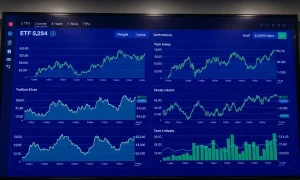Managing 25 credit cards requires careful strategy, especially when considering cancellation. Many seniors worry about credit score impact when reducing their card portfolio. Fortunately, proper planning can minimize negative effects significantly.
Understanding Credit Score Fundamentals
Your credit score reflects multiple factors that cancellation affects. Payment history remains most important at 35% of your score. Credit utilization ratio constitutes 30% of the calculation. Length of credit history contributes 15% to the final number. New credit and credit mix each account for 10% of the total.
Strategic Credit Card Assessment Process
Begin by gathering all 25 credit card statements systematically. Create a spreadsheet listing these key details for each card:
- Credit limit and current balance
- Account opening date and payment history
- Annual fees and reward structures
- Current interest rates and terms
Prioritizing Cards for Cancellation
Focus first on cards with annual fees that provide little value. Consider canceling newer accounts before older ones. Preserve cards with the highest credit limits when possible. Maintain at least three active accounts for optimal scoring.
Gradual Cancellation Timeline Strategy
Spread cancellations over several months rather than doing them simultaneously. Wait at least 30-45 days between each account closure. Monitor your credit score after each cancellation carefully. This approach allows you to track changes and adjust strategy accordingly.
Credit Utilization Management Techniques
Pay down balances before closing any accounts to maintain low utilization. Keep overall credit usage below 30% of available limits. Consider requesting credit limit increases on remaining cards. These actions help offset reduced available credit from closures.
Age of Credit Considerations
Closed accounts remain on your report for up to ten years in most cases. They continue contributing to your average account age during this period. Prioritize keeping your oldest credit cards active whenever possible. This strategy helps maintain your length of credit history.
Alternative Options to Cancellation
Consider product changes instead of outright cancellations where available. Ask about fee waivers on cards you want to keep. Explore downgrading to no-fee versions of premium cards. These options preserve credit history while reducing costs.
Post-Cancellation Monitoring Practices
Check your credit report 30-60 days after each account closure. Dispute any inaccuracies promptly with all three bureaus. Continue making payments on time for all remaining accounts. Maintain low balances on active cards consistently.
Frequently Asked Questions
How many credit cards should I keep after cancellation?
Maintain at least three active credit cards for optimal scoring. This number provides sufficient credit availability while remaining manageable.
Will closing old accounts immediately hurt my credit score?
Closed accounts continue contributing to your credit history for several years. Immediate impacts usually involve credit utilization changes rather than history length.
Should I cancel cards with annual fees first?
Yes, prioritize canceling cards with high annual fees that don’t provide proportional value. However, consider fee waiver requests before cancellation.
How long should I wait between card cancellations?
Wait 30-45 days between cancellations to monitor credit impact and adjust strategy as needed.
Can I reopen a closed credit card account later?
Reopening closed accounts is generally not possible. You would need to reapply as a new applicant if you want the card again.
Does canceling store credit cards affect scores differently?
Store cards typically have lower limits and may impact utilization more significantly. However, the fundamental scoring factors remain the same across card types.








